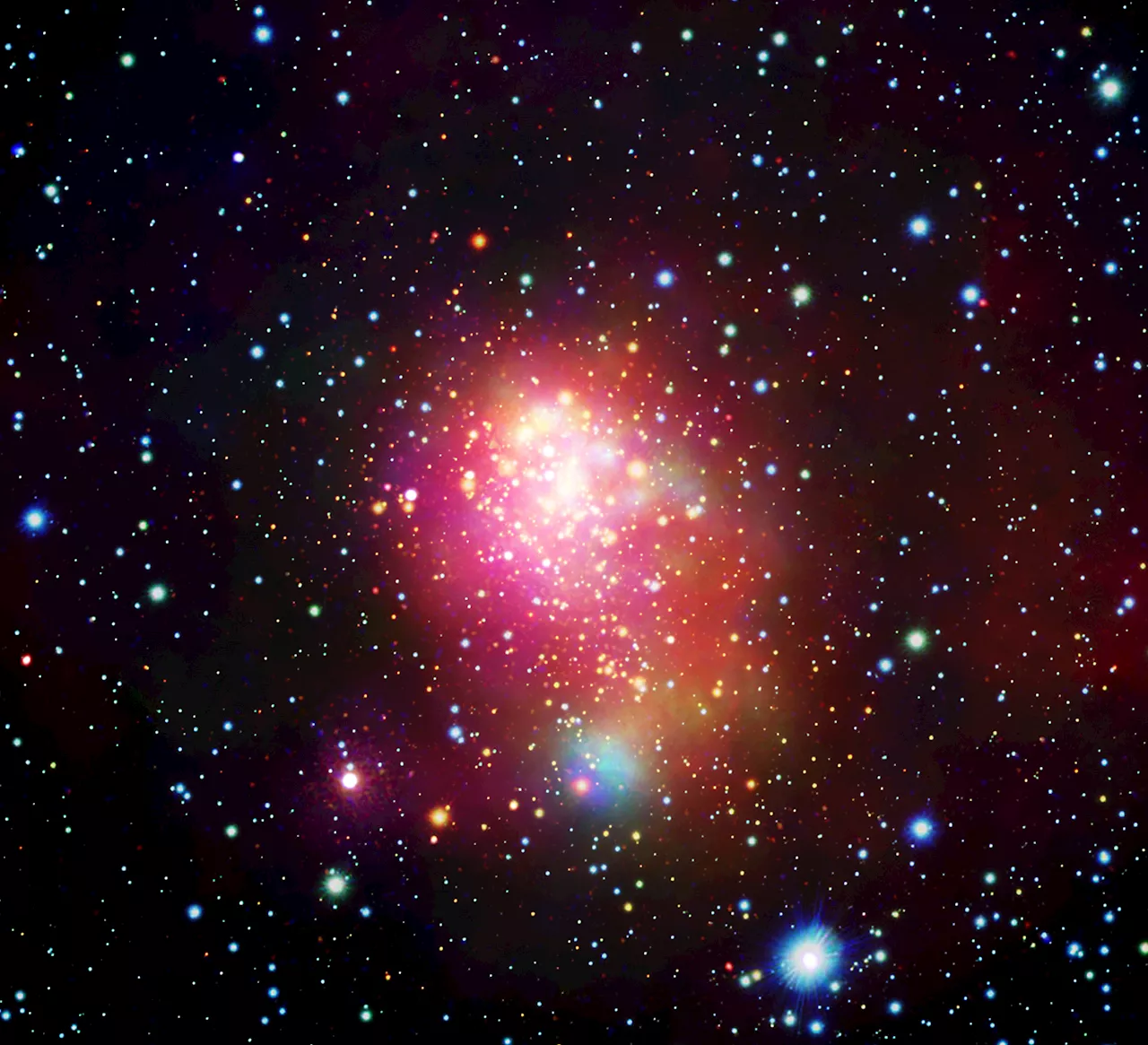Robert Lea is a science journalist in the U.K. whose articles have been published in Physics World, New Scientist, Astronomy Magazine, All About Space, Newsweek and ZME Science. He also writes about science communication for Elsevier and the European Journal of Physics. Rob holds a bachelor of science degree in physics and astronomy from the U.K.
It's a bird... it's a plane... it's a super star cluster! NASA's Chandra X-ray telescope has imaged a star cluster that is"super" in every way. Westerlund 1 is super-large, super-massive, super-young, super-close — and it is creating stars at a super-fast rate.is located around 13,000 light-years away from Earth — meaning it's very close, relatively speaking — and the 3 million to 5 million-year-old star cluster is around 7 light-years wide.
The new Chandra data has tripled the number of known X-ray sources in Westerlund 1. Prior to the EWOCS project, Chandra had detected 1,721 X-ray sources in the superstar cluster; the EWOCS data, on the other hand, has revealed almost 6,000 X-ray sources. These include faint stars within Westerlund 1 to study.
Robert Lea is a science journalist in the U.K. whose articles have been published in Physics World, New Scientist, Astronomy Magazine, All About Space, Newsweek and ZME Science. He also writes about science communication for Elsevier and the European Journal of Physics. Rob holds a bachelor of science degree in physics and astronomy from the U.K.’s Open University. Follow him on Twitter @sciencef1rst.
United States Latest News, United States Headlines
Similar News:You can also read news stories similar to this one that we have collected from other news sources.
 Space photo of the week: James Webb and Chandra telescopes spot a 'lighthouse' pointed at EarthJamie Carter is a freelance journalist and regular Live Science contributor based in Cardiff, U.K. He is the author of A Stargazing Program For Beginners and lectures on astronomy and the natural world. Jamie regularly writes for Space.com, TechRadar.com, Forbes Science, BBC Wildlife magazine and Scientific American, and many others.
Space photo of the week: James Webb and Chandra telescopes spot a 'lighthouse' pointed at EarthJamie Carter is a freelance journalist and regular Live Science contributor based in Cardiff, U.K. He is the author of A Stargazing Program For Beginners and lectures on astronomy and the natural world. Jamie regularly writes for Space.com, TechRadar.com, Forbes Science, BBC Wildlife magazine and Scientific American, and many others.
Read more »
 'Super' Star Cluster Shines in New Look From NASA's ChandraWesterlund 1 is the biggest and closest “super” star cluster to Earth. New data from NASA’s Chandra X-ray Observatory, in combination with
'Super' Star Cluster Shines in New Look From NASA's ChandraWesterlund 1 is the biggest and closest “super” star cluster to Earth. New data from NASA’s Chandra X-ray Observatory, in combination with
Read more »
 Star cluster shines in new look from NASA's ChandraWesterlund 1 is the biggest and closest 'super' star cluster to Earth. New data from NASA's Chandra X-ray Observatory, in combination with other NASA telescopes, is helping astronomers delve deeper into this galactic factory where stars are vigorously being produced.
Star cluster shines in new look from NASA's ChandraWesterlund 1 is the biggest and closest 'super' star cluster to Earth. New data from NASA's Chandra X-ray Observatory, in combination with other NASA telescopes, is helping astronomers delve deeper into this galactic factory where stars are vigorously being produced.
Read more »
 Coming in hot: NASA's Chandra checks habitability of exoplanetsUsing NASA's Chandra X-ray Observatory and ESA's (European Space Agency's) XMM-Newton, astronomers are exploring whether nearby stars could host habitable exoplanets, based on whether they emit radiation that could destroy potential conditions for life as we know it.
Coming in hot: NASA's Chandra checks habitability of exoplanetsUsing NASA's Chandra X-ray Observatory and ESA's (European Space Agency's) XMM-Newton, astronomers are exploring whether nearby stars could host habitable exoplanets, based on whether they emit radiation that could destroy potential conditions for life as we know it.
Read more »
 Coming in Hot — NASA's Chandra Checks Habitability of ExoplanetsAstronomers are using these X-ray data to determine how habitable exoplanets may be based on whether they receive lethal radiation from the stars they orbit,
Coming in Hot — NASA's Chandra Checks Habitability of ExoplanetsAstronomers are using these X-ray data to determine how habitable exoplanets may be based on whether they receive lethal radiation from the stars they orbit,
Read more »
 How Data From The Chandra X-Ray Observatory Helps With Studying Energetic Black HolesNASA’s Chandra X-ray Observatory detects X-ray emissions from astronomical events.
How Data From The Chandra X-Ray Observatory Helps With Studying Energetic Black HolesNASA’s Chandra X-ray Observatory detects X-ray emissions from astronomical events.
Read more »
